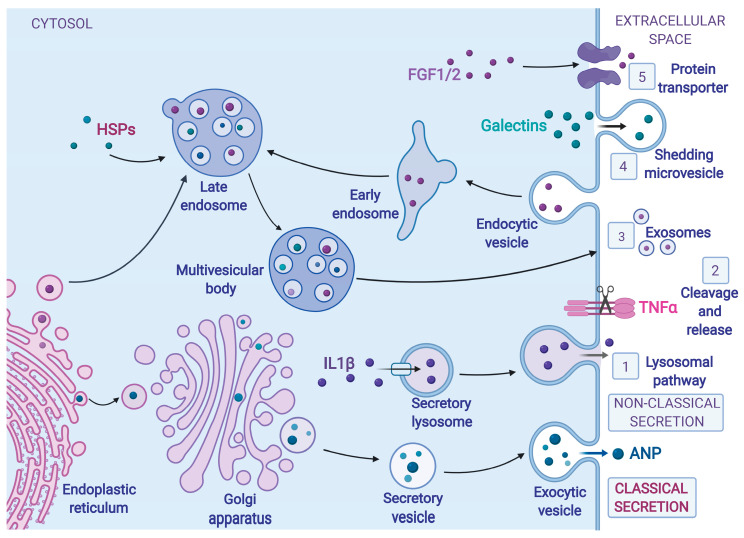Figure 1.
Mechanisms of Cardiokine Secretion. Cardiokines (secreted proteins from cardiac cells), such as atrial natriuretic protein (ANP), made at the endoplasmic reticulum (ER), are conventionally transported to the Golgi apparatus, where they are modified and packaged into secretory vesicles and then to the plasma membrane, where they are released into the extracellular space, in what is known as classical protein secretion. Some cardiokines that enter the ER bypass the Golgi apparatus, in some cases entering membrane-bound organelles such as endosomes, on their way to the plasma membrane. Cardiokines secreted via the non-classical secretory pathway are synthesized on cytosolic ribosomes and traffic through various kinds of either vesicle- or nonvesicle-mediated pathways, without transiting through the ER and the Golgi apparatus. Non-classical protein secretion pathways include (1) incorporation into the lysosomal pathway, for example, interleukin 1β (IL1β), (2) cleavage and release from a membrane-bound precursor, for example, tumor necrosis factor α (TNFα), (3) release via exosomes derived from multivesicular bodies, for example, heat shock proteins (HSPs), (4) membrane blebbing and microvesicle shedding, for example, galectins, and (5) direct translocation of proteins across the plasma membrane through membrane transporters, for example fibroblast growth factor 1 and 2. Figures were created with BioRender.com.

